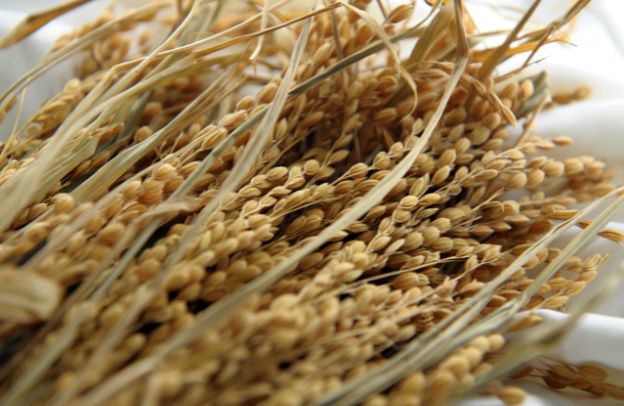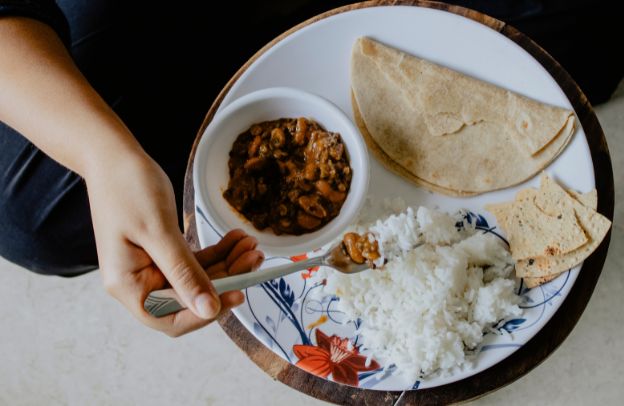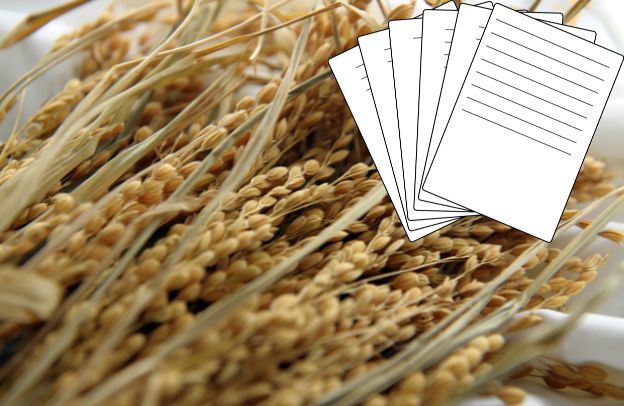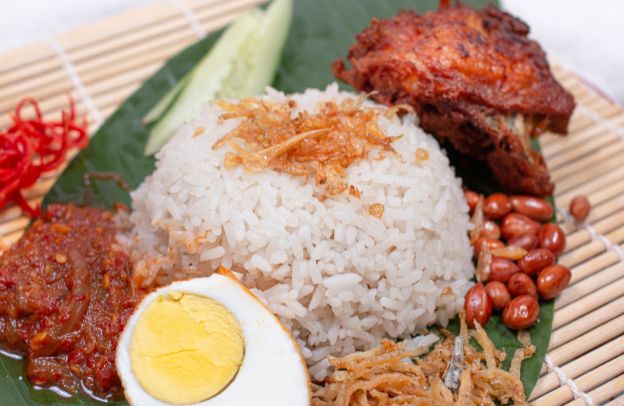How You Can Transform Africa’s Rice Industry and Boost Food Security

Have you ever wondered why Africa, despite its vast arable land, still imports a significant portion of its rice? With 60% of the world’s uncultivated arable land, Africa should be a leading food producer, yet the continent spends over $6 billion annually on rice imports. Nigeria, for instance, according to FAO consumes approximately 6.7 million metric tons of rice every year but produces only about 4 million metric tons, leaving a deficit of 2.7 million metric tons. This reliance on imports drains foreign exchange reserves, raises food prices, and poses risks to food security.
(Learn How to Leverage Your Story through our Story to Asset Framework.)
According to a McKinsey report, Africa’s annual exports of food and agricultural products are valued at between $35 billion and $40 billion, with intra-regional trade in these products accounting for approximately $8 billion each year. Additionally, Africa imports between $45 billion and $50 billion worth of food and agricultural products annually, alongside $6 billion in agricultural inputs.
But what if you, as part of the African diaspora, could change this? What if your investment, knowledge, and influence could turn Nigeria into a major rice exporter rather than a perpetual importer?
The African diaspora has already demonstrated its power in driving development, contributing over $100 billion in remittances in 2023, according to a UN report, surpassing Foreign Direct Investment (FDI) and official development aid combined. Imagine what a fraction of that amount could do for African agribusiness, especially in Nigeria’s rice industry.
This article will explore the challenges facing rice production in Africa, the innovative solutions emerging across the continent, and how you can be part of this agricultural transformation.
Understanding the Challenges in African Rice Production
Rice production in Africa has faced numerous challenges over the years, preventing the continent from fully harnessing its potential in this vital agricultural sector. To make informed investment decisions, it is essential to first understand the key obstacles that have consistently hindered growth in rice farming.
From inadequate infrastructure to climate change and limited access to technology, these factors have collectively contributed to Africa’s struggle to meet its rice demand. This overview will delve into the primary challenges that need to be addressed to foster sustainable growth in the African rice industry. Here are a few for your consideration.
1. Limited Access to Modern Farming Techniques
Many African farmers still use traditional, low-yield farming methods. In Nigeria, agriculture employs more than 36% of the labor force, yet over 80% of these farmers are smallholders who lack access to modern machinery, improved seeds, and precision farming techniques. (PwC)
2. Climate Change and Unpredictable Weather
Rice farming is particularly sensitive to climate variability. Erratic rainfall, prolonged droughts, and unexpected floods have made it difficult for farmers to plan their planting and harvesting cycles. In many parts of Africa, access to reliable weather forecasting tools is limited, leaving farmers vulnerable to climate shocks.
3. Pests and Diseases
Outbreaks of pests and diseases continue to devastate rice farms. The African rice gall midge and rice blast disease, for instance, can wipe out up to 40% of annual yields. Small-scale farmers often lack access to resistant seed varieties, pesticides, and training on integrated pest management.
4. Inadequate Infrastructure
From poor road networks to insufficient storage facilities, weak infrastructure exacerbates post-harvest losses. In Sub-Saharan Africa, only 16% of rural roads are paved, making it difficult for farmers to transport rice to markets. Poor storage facilities also lead to spoilage, with post-harvest losses estimated at 30-40% of total production.
See also: How to Boost Rice Production in Africa: The Role of Smallholder Farmers
Innovative Solutions Paving the Way Forward
Despite these challenges, several innovative approaches are transforming rice production across Africa. Here are some of the most promising solutions:
Adoption of Modern Farming Techniques
Precision agriculture, which integrates GPS technology, soil sensors, and data analytics, is helping farmers optimize their planting cycles. Smart irrigation systems, such as drip irrigation and rainwater harvesting, are also conserving water while improving yields.
Organizations like the African Rice Center (AfricaRice) are promoting these modern techniques among smallholder farmers.
Formerly known as the West Africa Rice Development Association (WARDA), Africa Rice Center is a pan-African intergovernmental organization and a key CGIAR Research Center, headquartered in Abidjan, Côte d’Ivoire.
Established in 1971 by 11 West African nations, AfricaRice has since expanded its membership to 28 African countries as of 2023. Since 1986, it has been recognized as one of the 15 specialized research centers within the CGIAR network, playing a pivotal role in advancing agricultural research across the continent.
Development of Resilient Seed Varieties
Research institutions, such as the International Rice Research Institute (IRRI) and the AfricaRice Center, are developing high-yield, drought-resistant, and early-maturing rice varieties. These new seed varieties can thrive even in challenging climatic conditions, reducing farmers’ risks.
Innovative Financing Models
Access to capital is improving thanks to microfinance, crowdfunding, and impact investment models. For example, the Uganda Diaspora Agribusiness Network has facilitated investments from African diaspora members into local agribusinesses. Similar models could be replicated in Nigeria to drive large-scale rice production.
See also: Overcoming Challenges In Rice Production In Africa: Innovative Solutions
Nigeria’s Agricultural Potential: A Closer Look
Nigeria’s agriculture sector is a vital pillar of the economy, contributing approximately 24% to the country’s GDP and providing employment for over 70% of the workforce. Agriculture is not just an economic activity in Nigeria; it is a key driver of rural development, food security, and industrial growth.
With a rapidly expanding population expected to reach 400 million by 2050, the demand for food, especially rice, is set to increase significantly.
Despite challenges in the sector, Nigeria holds tremendous potential to become a self-sufficient rice producer and even an exporter. This potential is driven by a combination of land and climate advantages, government incentives, and expanding agro-processing opportunities.
Land and Climate Advantages: Nigeria’s Untapped Goldmine
Nigeria boasts approximately 70.8 million hectares of agricultural land, making it one of Africa’s most fertile countries. Of this, over 4 million hectares are suitable for rice farming, yet only a fraction is currently under cultivation.
Certain states have emerged as key rice-producing hubs due to their favorable climate, soil conditions, and access to water resources. Some of the most prominent rice-producing states include:
- Kebbi State: Dubbed the “Rice Capital of Nigeria,” Kebbi has vast floodplains along the Sokoto-Rima River, which provide ideal conditions for rice farming.
- Ebonyi State: Located in southeastern Nigeria, Ebonyi benefits from fertile alluvial soils and year-round rainfall, making it a major contributor to rice production.
- Niger State: Home to the largest landmass in Nigeria, Niger State has extensive arable land and favorable weather patterns for rice cultivation.
- Taraba State: With its proximity to the Benue River Basin, Taraba offers rich agricultural land and abundant water sources for irrigation-based rice farming.
Additionally, Nigeria’s tropical climate supports multiple rice-growing seasons per year. The country has two major rice cultivation systems:
- Rain-fed farming (upland and lowland systems): Heavily practiced in regions with seasonal rainfall.
- Irrigated rice farming: More productive and sustainable, especially in areas like Kebbi and Kano, where the Hadejia-Jama’are River Basin provides water for large-scale rice cultivation.
With proper investment in irrigation and mechanized farming, Nigeria could double or even triple its current rice output, reducing dependence on imports and boosting exports.
Government Support and Incentives: Fueling the Growth of Rice Farming
Recognizing the importance of agriculture, the Nigerian government has introduced several policies and programs aimed at increasing local rice production. These include:
Anchor Borrowers’ Program (ABP): Empowering Smallholder Farmers
Launched in 2015 by the Central Bank of Nigeria (CBN), the Anchor Borrowers’ Program (ABP) has played a key role in expanding rice production.
- The program provides low-interest loans to smallholder farmers through agricultural cooperatives.
- It connects farmers to large-scale millers and processors, ensuring a stable market for locally grown rice.
- As of 2023, the program had disbursed over ₦1 trillion ($2.2 billion USD), benefiting more than 4.8 million farmers across Nigeria.
Rice Import Restrictions: Encouraging Local Production
The Nigerian government has implemented strict import policies to encourage local rice production.
- In 2015, Nigeria banned rice imports through land borders to curb smuggling.
- Import duties on foreign rice were raised to make locally produced rice more competitive.
- As a result, local rice brands like Mama Pride, Umza, and Lake Rice have gained popularity, boosting sales for Nigerian rice farmers.
Special Agro-Industrial Processing Zones (SAPZs):
Boosting Agro-Processing
The Nigerian government, in partnership with the African Development Bank (AfDB), launched the Special Agro-Industrial Processing Zones (SAPZs) to promote value addition in agriculture.
- These zones provide incentives for investors in food processing, storage, and logistics.
- Rice milling clusters within these zones enhance efficiency, reduce post-harvest losses, and improve product quality.
- The SAPZ initiative is expected to attract over $1.2 billion in private sector investment into Nigerian agribusiness by 2030.
By combining financing programs, trade policies, and infrastructure development, the government is laying the groundwork for Nigeria to become a net rice exporter within the next decade.
Agro-Processing and Export Potential: The Future of Nigerian Rice
While primary rice production is important, processing and value addition hold even greater economic potential. Investing in rice milling, packaging, and exports can create jobs, increase farmers’ incomes, and generate foreign exchange earnings.
Expansion of Rice Milling Capacity
Nigeria has over 70 rice mills, but many small-scale mills still rely on outdated technology, leading to poor-quality rice. However, investments in modern milling are changing the landscape.
- The government-backed Lagos Rice Mill (Imota), the largest in Sub-Saharan Africa, has a capacity of 32 metric tons per hour, producing high-quality local rice.
- Other large-scale mills, such as Olam Rice Mill in Nasarawa and Dangote Rice Processing Plant, are driving efficiency and reducing post-harvest losses.
Rising Export Opportunities
With the right policies and investments, Nigeria can tap into the growing global demand for rice.
- West Africa alone imports over 12 million metric tons of rice annually, presenting a huge regional market for Nigerian rice exports.
- Nigeria’s participation in the African Continental Free Trade Area (AfCFTA) gives local rice producers access to a $3.4 trillion trade bloc, opening doors for exports to Ghana, Senegal, and Côte d’Ivoire.
- The demand for parboiled rice, a specialty of Nigerian farmers, is increasing in countries like Benin, Togo, and Cameroon.
Job Creation and Economic Growth
The growth of Nigeria’s rice industry extends beyond farmers, it impacts the entire value chain, from input suppliers to transporters, millers, and distributors.
- Expanding rice processing and packaging industries can create millions of jobs for Nigerian youth.
- Nigeria’s agribusiness sector is projected to be worth $1 trillion by 2030, with rice being a major contributor.
With proper investment in storage facilities, transport logistics, and export infrastructure, Nigeria can position itself as a leading supplier of rice in Africa and beyond.
See also: Rice Production in Africa: The Role of Government Policies and Investment
Nigeria’s potential to become a global rice powerhouse is immense but underutilized. With vast arable land, a supportive climate, government incentives, and an expanding agro-processing sector, the country has all the ingredients to not only achieve self-sufficiency but also become an exporter of high-quality rice.
To unlock this potential, collaboration between the Nigerian government, private investors, and the African diaspora is crucial.
- Expanding access to finance and mechanized farming will increase yields.
- Strengthening processing and storage infrastructure will enhance competitiveness.
- Leveraging regional trade agreements will open new export opportunities.
Seizing the Opportunity
The challenges in Africa’s rice production present a golden opportunity for transformation. The time to act is now. As a member of the African diaspora, your involvement can:
- Modernizing farming practices
- Creating thousands of jobs
- Reducing Africa’s dependence on imports
- Strengthening food security
Whether through direct investment, skill transfer, or advocacy, you can play a pivotal role in shaping Nigeria’s agricultural future. Will you seize this moment to be part of Africa’s agricultural renaissance?
The future of Africa’s agriculture depends on the collective efforts of its people, both at home and abroad. Now is the time to plant the seeds of change.
(Learn How to Leverage Your Story through our Story to Asset Framework.)






